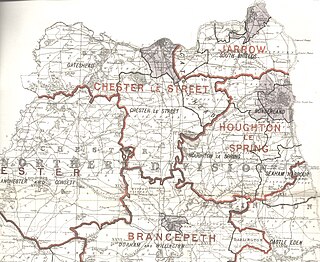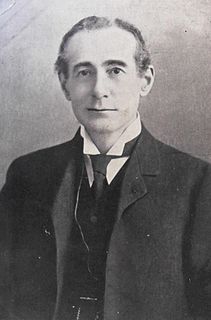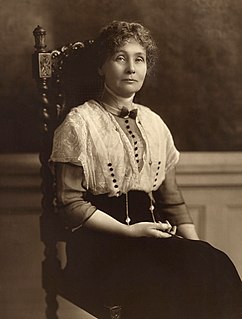
The 1959 United Kingdom general election was held on Thursday, 8 October 1959. It marked a third consecutive victory for the ruling Conservative Party, now led by Harold Macmillan. For the second time in a row, the Conservatives increased their overall majority in Parliament, to 101 seats over the Labour Party led by Hugh Gaitskell. The Liberal Party led by Jo Grimond again returned only six MPs to the House of Commons, but managed to increase their overall share of the vote to 5.9%; compared to just 2.7% four years earlier. To date, the 1959 general election marks the only occasion since the Second World War when a government has managed to increase its overall majority while seeking a third term in government. However, despite this electoral success; the Conservatives failed to win the most seats in Scotland, and have not done so since. This election marks the beginning of Labour's domination of Scottish seats at Westminster, which lasted until the rise of the Scottish National Party at the 2015 general election. Both future Liberal leader Jeremy Thorpe and future Conservative Party leader and eventual Prime Minister Margaret Thatcher first entered the House of Commons at this election.

The 2005 United Kingdom general election was held on Thursday 5 May 2005, to elect 646 members to the House of Commons. The Labour Party led by Tony Blair won its third consecutive victory, with Blair becoming the only Labour leader beside Harold Wilson to form three majority governments. However, its majority now stood at 66 seats compared to the 160-seat majority it had previously held. As of 2019, it remains the last general election victory for the Labour Party.
Wednesbury was a borough constituency in England's Black Country which returned one Member of Parliament to the House of Commons of the Parliament of the United Kingdom from 1868 until it was abolished for the February 1974 general election.
Ashburton was a borough constituency represented in the House of Commons of the Parliament at Westminster, for one Parliament in 1298 and regularly from 1640 until it was abolished for the 1868 general election. It was one of three Devon borough constituencies newly enfranchised in the Long Parliament. It returned two Members of Parliament until the 1832 general election when the number was reduced to one MP.
The Hastings by-election 1908 was a Parliamentary by-election. Hastings returned one Member of Parliament to the House of Commons of the United Kingdom, elected by the first past the post voting system.

The Bodmin by-election, 1922 was a parliamentary by-election for the British House of Commons. The constituency of Bodmin in Cornwall polled on 24 February 1922. The by-election was notable for the opposition Liberal Party gaining a seat from the Coalition supporting Conservative Party.
The Newmarket by-election, 1913 was a parliamentary by-election held on 16 May 1913 to fill a vacancy in the United Kingdom House of Commons for the Eastern or Newmarket Division of Cambridgeshire.
The Ashburton by-election, 1904 was a parliamentary by-election held in England on 7 January 1904 to elect a new Member of Parliament (MP) for the British House of Commons constituency of Ashburton in Devon. It was triggerred by the death of the sitting Liberal Party MP Charles Seale-Hayne.
The Barnard Castle by-election, 1903 was a parliamentary by-election held for the British House of Commons constituency of Barnard Castle, in County Durham, on 24 July 1903.
The Eccles by-election, 1890 was a parliamentary by-election held for the British House of Commons constituency of Eccles in Lancashire on 22 October 1890.
The Leeds South by-election, 1908 was a parliamentary by-election for the House of Commons constituency of Leeds South in the West Riding of Yorkshire held on 13 February 1908.
The Gorton by-election, 1889 was a parliamentary by-election held on 22 March 1889 for the British House of Commons in the Gorton Division of Lancashire.
The Spalding by-election, 1917 was a parliamentary by-election held for the House of Commons constituency of Spalding in Lincolnshire on 25 October 1917.
Glasgow Tradeston constituency was created in 1885, and elected Liberal Archibald Corbett as their MP from then until he retired from the House of Commons in 1911 to take a seat in the House of Lords as 1st Baron Rowallan. Although Tradeston had consistently voted for Corbett, he did not consistently stand under the same label. In 1885 he stood as a Liberal against a Conservative. In 1886 following a split in the Liberal party he stood as a Liberal Unionist against a Liberal. Thereafter this was the normal contest until 1910. He had re-joined the Liberal party in 1908 but he did not win the official Liberal nomination in January 1910. This time standing as an Independent Liberal he scraped a victory against both Liberal and Conservative candidates. Then at the last general election, standing as the official Liberal candidate he won comfortably.
The West Ham North by-election was a Parliamentary by-election which was held in 1911. It returned one Member of Parliament to the House of Commons of the Parliament of the United Kingdom, elected by the first past the post voting system.

The North West Durham by-election was a Parliamentary by-election held on 30 January 1914. It returned one Member of Parliament to the House of Commons of the United Kingdom, elected by the first past the post voting system.

The Crewe by-election was a Parliamentary by-election. It returned one Member of Parliament to the House of Commons of the United Kingdom, elected by the first past the post voting system.
The Chertsey by-election, 1922 was a parliamentary by-election for the British House of Commons constituency of Chertsey on 24 March 1922.
The Whitby by-election was a Parliamentary by-election. It returned one Member of Parliament to the House of Commons of the United Kingdom, elected by the first past the post voting system.
The Rugby by-election, 1942 was a parliamentary by-election for the British House of Commons constituency of Rugby on 29 April 1942.











